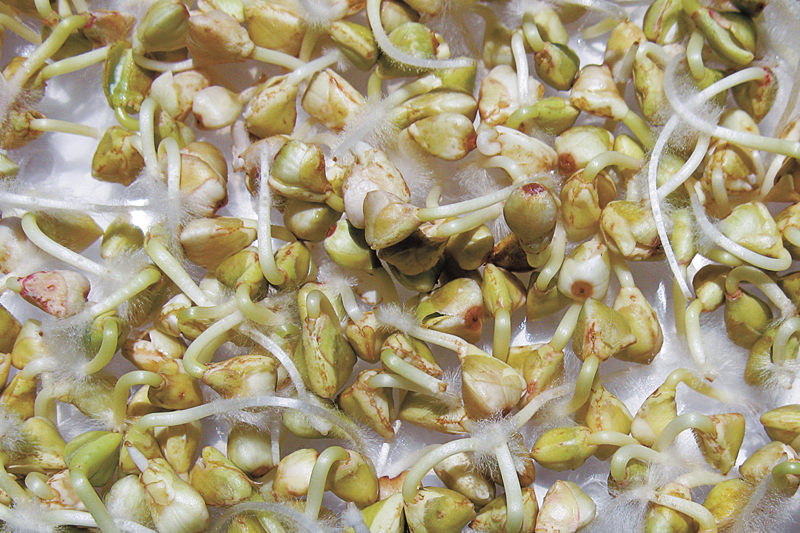Built around 3200 BC, the tomb Newgrange in Ireland is flooded with light on the winter solstice, the shortest day of the year and the start of winter. Its true purpose is still unknown. What is known is that short winter days can keep healthy greens out of our diet. Green chlorophyl-rich foods contain essential vitamins and nutrients that aid muscular, cardiovascular, and neural health. Chlorophyll can sweeten normal body odors and promote a healthy gut with less constipation and gas. Chlorophyll promotes healing because it binds with toxic metals, and this slows down how much of them our bodies absorb.
Chlorophyll eliminates free radicals and protects cells from oxidative damage. Traditional medicine has long used green leaves to treat infections, and some animal studies show that green leaves reduce redness and swelling. Chlorophyll might even suppress hunger.
But dark, gloomy winter is often when chlorophyll-rich foods are missing in our diets.
By sowing quick-growing microgreens as sprouts, you can enjoy the benefits of chlorophyll even on the shortest days of winter. You can grow sprouts or microgreens either in jars or trays of soil. Often, sprouts grown in water in a mason jar simply rot or get slimy, so you can grow your sprouts and greens in soil and avoid many problems of sprouting.
Unlike other planters or pots, the trays for growing greens do not need drainage holes. Ideally, use a tray that is two to three inches deep. You don't need a lid, but a lid can come in handy.
There are many different types of sprouts, and fresh sprouts are some of the most nutritious of all vegetables.
Some favorite seeds for sprouting in trays of soil are buckwheat, peas, radishes of all types, broccoli, wheat, amaranth and black oil sunflower seeds (the same oil sunflower seeds sold as bird feed).
Always use unhulled seed such as buckwheat or sunflower. Soak the seeds in water for 12 hours. Drain well and sow the seed on top of an inch of soil. Spread a two-inch layer of soil in each growing tray. You can scatter or "broadcast" the seeds across the soil surface or gently plant them just below the surface, perhaps one-eighth inch deep. No need to worry about overcrowding because you will be harvesting the greens before the roots have really expanded.
Once the seeds are planted and misted with warm water, you can put the lid on if you have one. Or you can put a loose covering of plastic wrap over the trays. The plastic wrap or the lid holds in moisture for the emerging seeds. Keep the soil moist but not soggy. Some growers cover the trays with two layers of damp paper towels.
In just four or five days, the young sprouts will emerge.
From here, move them to a sunny window or a grow light. Set your planted trays out of direct sunlight where they won't be disturbed. They do not need any light until the sprouts emerge from the soil. Ideal temperature for sprouting is 65 to 75 degrees Fahrenheit.
Once the first leaves appear you can move them to indirect sunlight. You want some light to keep the leaves green. Be careful, because too much sunlight will overheat the soil and kill the sprouts.
By the end of one week your young greens will be ready for harvesting. These young, truly baby greens will surprise you with their delicate texture and taste.





















































